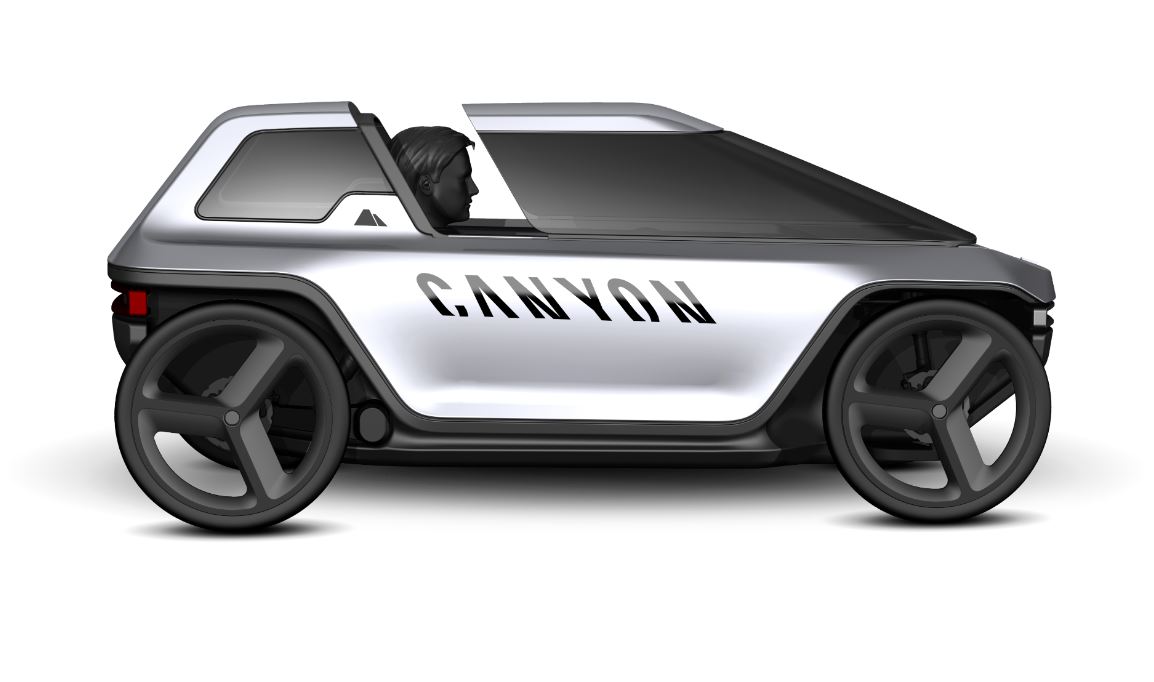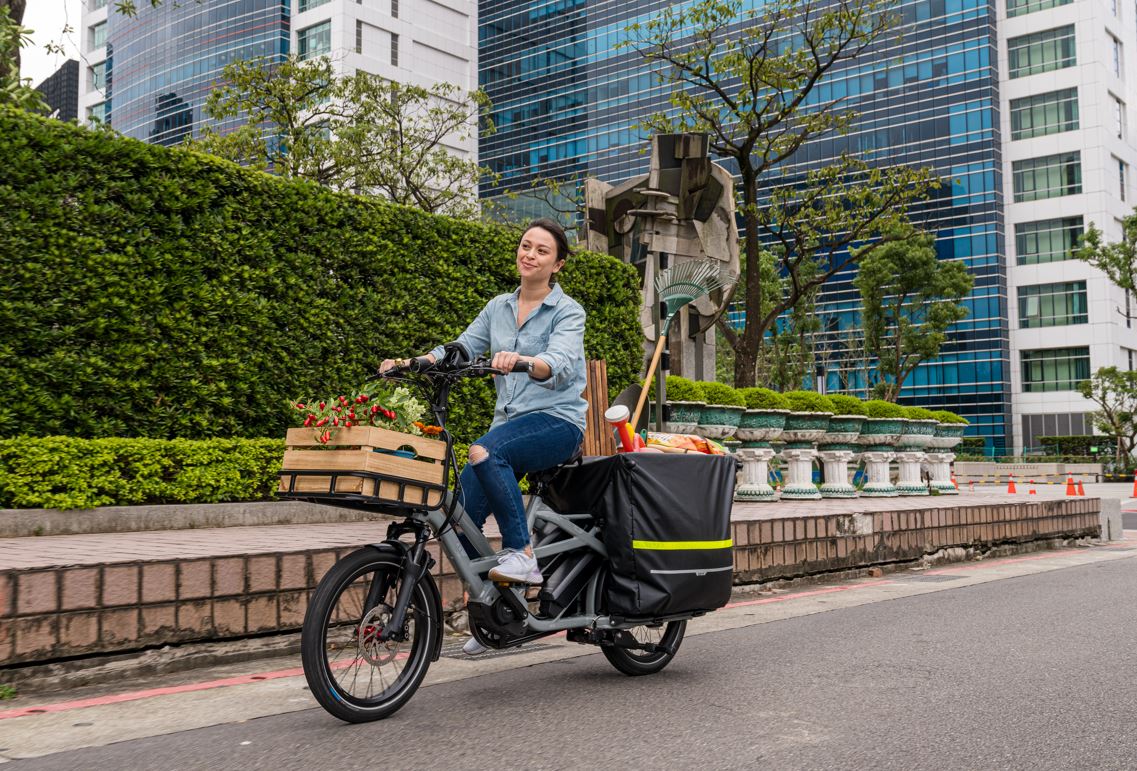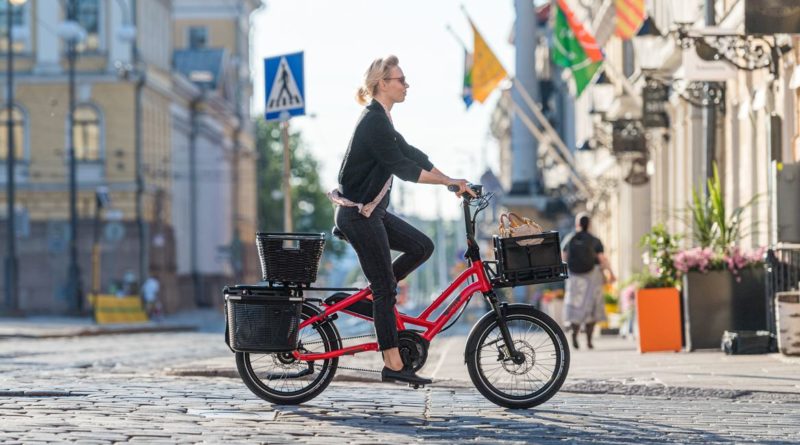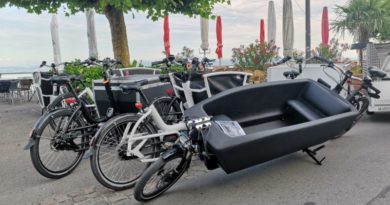As e-Mobility evolves can we afford not to discuss electric bike speeds?
There are whispers circulating that the UK Government may have an open mind to a changing electric bike legislation to be more akin to that of the USA. CI.N tackles a controversial topic to understand the pros and cons of mirroring North American, rather than European norms…
During June a hint was dropped into the Cycling Industry Chat Facebook group that the UK Government has begun to consider whether the current regulations for the assisted speed on electric bikes could rise to 20mph. A few conversations later and it is clear brands around Europe appear to have heard the same whispers, though at the time of writing it should be stressed they are just that.
The thread has ignited an impassioned debate on the subject that has meandered between a suitable assisted speed for various e-Bike types, the dangers associated with various vehicle types and the scope to add appeal to the eBike category. Understandably, there are passionate views on both sides, but one common ground is established; the electric bike business and indeed wider micromobility trade is in its infancy. Evolution is guaranteed.
One brand with a significant interest in the subject is European specialist electric bike maker Riese & Müller, whose heavy investment in expanding its production will ultimately result in exports to territories with both 15.5mph and 20mph regulations.
Markus Riese is R&M’s expert on the subject, and he believes the limits in place should be reflective of the available infrastructure. “20mph is fine on a cycle network with space and wide tracks, but not so preferable under European conditions. 20mph is too fast on crowded and narrow cycle ways and too slow to integrate you fully into the car traffic. It is better to ride at same speed as the cars in the middle of the road with a speed EPAC. Like in Belgium or Switzerland, if cycle ways are opened to speed pedelecs then they will get popular. Cars are allowed to drive fast on highways and slow in cities; the same should really apply to speed pedelecs.”
 How realistic is to have separate speeds for long distance connections and inner-city usage is a matter for technological development of e-Bikes and enforcement of regulations in city centres. It is an idea that has been mooted quite seriously by brands, however. When Canyon lifted the lid on a new concept velomobile to journalists in September of 2020 the product designers revealed the intention was to have two entirely separate motors for the aforementioned purposes – that is one high-speed assistance for on road use and one lower speed motor that will deliver a cycle path friendly experience.
How realistic is to have separate speeds for long distance connections and inner-city usage is a matter for technological development of e-Bikes and enforcement of regulations in city centres. It is an idea that has been mooted quite seriously by brands, however. When Canyon lifted the lid on a new concept velomobile to journalists in September of 2020 the product designers revealed the intention was to have two entirely separate motors for the aforementioned purposes – that is one high-speed assistance for on road use and one lower speed motor that will deliver a cycle path friendly experience.
The benefit here in car replacement terms is obvious, some argue and with motoring uptake forecast to add 10 million more cars on UK roads at any one time by 2050, something will have to give if inner city roads hope to be anything other than mobile car parks.
Annick Roetynck has a well-formed view of the subject as LEVA-EU’s manager. LEVA has members that wish to see regulations revised, believing there to be an untapped market for e-Bike commuters in the waiting. Some of these views are based on an assessment of regions where the speed pedelec is already chalking up sales thanks to bylaws permitting their use without all the attached paperwork usually associated.
“From the Belgian Flemish project 365SNEL, it has clearly appeared that there are two categories of speed pedelecs, i.e. cruising speed 30 to 35 km/h (anything with a Bosch motor) and cruising speed around 40 km/h (Stromer, Klever etc). They attract a different public. People who buy a Stromer or Klever originally believe that they will be able to reach a constant speed of 45 km/h. They are often looking for a vehicle to cover a longer commute. They think that the speed pedelec will save them a lot of time, which is only true in one respect. The speed pedelec offers them punctuality, they know exactly how much time they will spend on their commute, whereas in their car they can always get stuck in traffic. From 365SNEL it appeared that eventually the time issue became less important. The punctuality and the fun/pleasure they had from the cycling became determining factors. Of the 100 plus test riders in the project, around 20% decided after the test to definitely use a speed pedelec for commuting, while 15% swapped their car for a bike.”
 The 365SNEL project is one of very few testbeds where data and analysis can be gathered and so opinion remains largely anecdotal, despite the passionate calls either way. Belgium is the only country in the EU that has created a new “moped” category in the traffic code, specifically for speed pedelecs. This allowed for specific traffic rules for speed pedelecs, separate from the traffic rules for conventional mopeds.
The 365SNEL project is one of very few testbeds where data and analysis can be gathered and so opinion remains largely anecdotal, despite the passionate calls either way. Belgium is the only country in the EU that has created a new “moped” category in the traffic code, specifically for speed pedelecs. This allowed for specific traffic rules for speed pedelecs, separate from the traffic rules for conventional mopeds.
“Don’t forget, those mopeds can effectively go up to 45 km/h, but on speed pedelecs that is a lot more difficult. Most of the speed pedelec traffic rules in Belgium are similar to those for conventional bicycles. The most important point is that speed pedelecs are allowed on cycle paths. If the speed on the road is more than 50 km/h, then speed pedelecs must go on cycle paths. That explains why Belgium is the only country in the EU with a constant and steady growth of the speed pedelec market. Thanks to these rules, speed pedelecs are not forced on the road with much heavier and faster cars, vans and trucks,” explains Roetnyck.
There is a feeling among some manufacturers and advocacy groups that pushing for higher speeds could be detrimental to the market as a whole, with 15.5mph e-Bikes potentially becoming a target of those believing the market to be on the cusp of poor regulation. For some, the current conditions, with strong sales prevailing, are more than enough to stay happy. This was the crux of a joint statement from Cycling Industries Europe, IMBA, ECLF and CONEBI in December of 2020, calling on the European Commission to protect the e-Bike’s status as a bicycle for the long-term. With Brexit since having come into force, whatever happens on mainland Europe may not necessarily be reflected in the UK.
Contrary to a feeling of not wanting to rock the boat, others believe our addressable market is stunted by a top assisted speed which can, by most people, be reached with a bit of gusto even on a pedal cycle.
“The higher speed might encourage people out of cars and that has to be a good thing,” starts Rory Hitchens at Upgrade Bikes. “Most people can do 15mph on the road without assistance. With 20mph we aren’t asking to break any speed records. 15.5mph is great on the climbs, but frustrating on anything else where you wish to cover ground.”
That appears to be the sticking point for many; if many people can already hit 15.5, is there any incentive enough to make the leap for those unsure what difference an eBike commute would make to their routine?
Referring to data that has been observed in Flanders, Roetnyck says “it appears that people are prepared to use a conventional bike for distances (one way) up to 7 km; a 25 km/h e-Bike up to 15 km and for anything above it a speed pedelec. In Belgium, there is an allowance for commuting by bike or e-Bike of € 0.24 per kilometre, tax free. (There is no obligation for the employers, it is a voluntary allowance). This makes it very interesting for some people to use a speed pedelec. If their commute is 30 km (one way), then they can “earn” €3,744 per year. That explains why many people in Belgium do not consider a speed pedelec an expensive bike.”
Subsidy to cycle in any form is bound to convert car drivers in time, but that appears a pipe dream here in the UK, at least for now. The DfT has now issued some of its e-Cycle extension fund revenue to local authorities to roll out e-Bike schemes, but the perks enjoyed by those buying into electric cars are yet to replicated for e-Bikes. That could risk cementing in old habits.
Back to the topic of speed and inevitable questions on context arise. Larger and far heavier vehicles can and regularly do speed, putting smaller and more vulnerable road users at risk. Is there not an argument that bikes would be safer having the option of better aligning speeds to that which is generally considered wise for residential spaces?
“20mph is too fast for narrow inner city cycle ways and too slow for riding at the same speed as the cars in the middle of the road,” says R&M’s Markus Riese. “I tested it for many years and statistics show riding on the right side of the car lane with 20mph is much unsafer (narrow overtaking, opening car doors, crossing cars at intersections) than riding in the same flow with the cars at 28mph. Speed EPACs are therefore the big chance for a true change of mobility patterns with existing infrastructure.”
That is a sentiment with which LEVA’s Roetnyck agrees. “I believe the key in the safety debate is not the speed of the e-Bikes themselves, it is how you blend the e-Bikes into mobility. It should always be ensured that if there is a relevant speed difference between motorised traffic and bikes/e-Bikes that these have separate cycle lanes available. That is also why we believe it would enhance safety if the limit of 25km/h bikes would be raised to 30km/h and potentially 45km/h (speed pedelecs) to 50km/h because then you minimalise the speed difference and you don’t need separate cycle lanes anymore. It allows the e-Bikes to better blend in with the rest of the traffic in a safe way.
Broach this subject outside of the bike world and the debate turns from impassioned to occasionally vitriolic and quite quickly loses the context of physics. Where motor vehicles kill five and seriously injure 63 people daily in the UK, cyclists kill, on average 2.5 people per year. The data at this stage does not account for electric bikes, which are of course still classed as bicycles. In weight terms, the trend is lower as manufacturers integrate smaller and lighter electrical components. Arguably, we are already at the point where many lighter e-Bikes weights are not too dissimilar to that of some heaver bicycles.
To further drill into the debate, it has been found that 1,000kg of car moving at 22mph will carry 50kJ of energy. A 15kg bike with 70kg of rider carries less then a tenth of that force at the same speed.

Regardless of the minute of the physics, some distinction will have to be made. In July, cycle insurer Bikmo was reported in The Times to have refused an insurance claim on the grounds that an electric bike owner had fitted a retrofit motor capable of 30mph. This, argued chief executive David George, meant there was no just claim on the bicycle insurance as the vehicle had crossed the threshold legally speaking to a status more akin to a moped. It was noted that many e-Bikes operating in the delivery economy might be running the same risks.
In relation to such modifications, it has been asked whether a speed increase would discourage the rogue modifications that stand to do harm to the electric bike business’s image. “Chipping is a problem,” said Windwave’s Dan Jones, “we need to do something to discourage that urge.”
From a retailer’s perspective, handling a legal and untampered bike is certainly preferable, both from a mechanical and liability standpoint.
Graham Rowe, the managing director of South coast electric bike specialist Elctrc, comes at the problem with an interesting viewpoint having been both a lifelong cyclists and an Institute of Advanced Motorists observer for cars. His shop is all too well-versed in turning away chipped or modified electric bikes, but in doing so he has recognised there is a potential market of customers who are capable riders who have genuine reasons for seeking extra kick.
“My view on faster e-Bikes is simple. Would they attract wider audience? Yes. I loathe the illegal stuff that goes on and we lose sales because of it. We won’t touch them, unless it is to take the hack off a customer’s bike. These are a huge risk to industry, so instead I would much prefer to take the pro-active route.”
With the customer rolling in a modified electric bike Rowe has a stark reminder that bikes unfit for the road can result in jail time, as was the case when Charlie Alliston hit a pedestrian, at around 18mph, on a pedal cycle without a front brake.
Rowe says that his store has acknowledged customer will one way or another pursue the additional speed if they perceive it will benefit their commute. Therefore, he has taken the rare, but entirely possible road to work closely with the DVSA to legally register speed pedelecs in the UK; number plate, insurance, suitable helmet – the works.
“I got on BBC local radio with the discussion of speed and e-Bikes and actually got positive feedback from the authorities. Speed pedelecs do pass necessary safety standards and so it is this overly boring but responsible approach I’ve taken and I want that template for the industry,” he says.
So, what about the notion that 20mph is appropriate within the pedal cycle legislation? “That’ a red herring for me,” says Rowe, adding “People will then ask for 25. It’s only 20 as people think this door might open easier than going full on for a defined speed pedelec category. I’m not dead against it but would prefer proper speed pedelec legislation.”
 Confirming that the rumour of a 20-mph assistance had made its way to Bafang’s European offices, Gary Xu, Europe Region Manager for the motor maker said that while road cyclists can get away with 20, or even higher speeds with relative ease, very often these are enthusiast riders with skillsets not possessed by commuters.
Confirming that the rumour of a 20-mph assistance had made its way to Bafang’s European offices, Gary Xu, Europe Region Manager for the motor maker said that while road cyclists can get away with 20, or even higher speeds with relative ease, very often these are enthusiast riders with skillsets not possessed by commuters.
Zu told CI.N: “It’s different for Urban or City bikes. the geometrical structure and configuration requirements of daily urban commuter and trekking bikes cannot meet the safe use requirements of 20mph, and riders are not professionally trained, especially considering urban roads are more dangerous. All in all, it’s a potential risk for the average riders that requires a faster emergency response time at high speeds.”
Seeing both sides of the debate and bringing oodles of personal experience in the mater, Tern’s founder Josh Hon tends to always come at the discussion from the viewpoint of what recipe is most likely to transform urban mobility. He starts in agreement that 25km/h is an essential starting point on which to begin the discussion and first and foremost this should not be jeopardised. It is essential that e-Bikes “are allowed to grow without undue regulations, like licensing and insurance”. Assuming this baseline can be maintained, it is appropriate to keep the dialogue open, he believes.
“This is how I see it: if you talk to 100 people about cycling to work instead of driving, maybe 5 to 10 might consider an environmental argument. Another 10 to 20 might consider a health argument. The remainder and overwhelming majority are governed by cost, safety, and time. Cycling is of course massively cheaper than driving a car every day. Safety and better infrastructure is something that we have to continually fight for. But then there’s time. Every minute you can shave off a commute by bike is another handful more people that would consider making the switch. Getting people out of cars and onto bikes for their commute to work is one of the best ways for us to reach our carbon neutral goals.”
Transportation speed, then, is a factor in play for cycling’s ability to get a bigger slice of the modal share pie. By default, so is safety, but it is here that logic should prevail too when comparing transport forms; but it doesn’t, Tesla has just released a new commercially available electric car that can hit 140mph in eight seconds, more than double the national speed limit in the time it takes to read this sentence. There are no cars sold with such restrictions, despite the higher threat posed and that, believe many, is where legislative focus should first be applied.
This is a sticking point for Hon who says that “I’d argue that there are many more (and severe) accidents with cars, but nonetheless local data is something that the people making the laws should look at. On a non-electric bike, I generally cruise at 17mph to 18mph. It’s frustrating to be limited to a slower speed on an e-Bike.”
Frustrating enough that previously Hon himself may well have driven, he tells us.
“My son has football practice every weekend. It’s about 15km away. In the past, we would always drive. That was the only option we ever considered. But with our Tern GSD, an e-cargo bike, we’ve been riding these last few years. I ride while my son sits on the back eating his breakfast and reading his book. My wife rides alongside. We have to pass through a pretty hairy intersection where there are four lanes of cars and buses merging right and left at the same time and I have to shoot through the middle on our bike. The higher 20mph speed on my electric bike is highly, highly appreciated. On a non-electric, riding my son would be too tiring. Asking him to ride 15km to and from practice (and wake up earlier to eat) would also be a non-starter,” he says, concluding that “My point is that without an electric bike set up like this, we’d all be driving to practice every weekend.”



